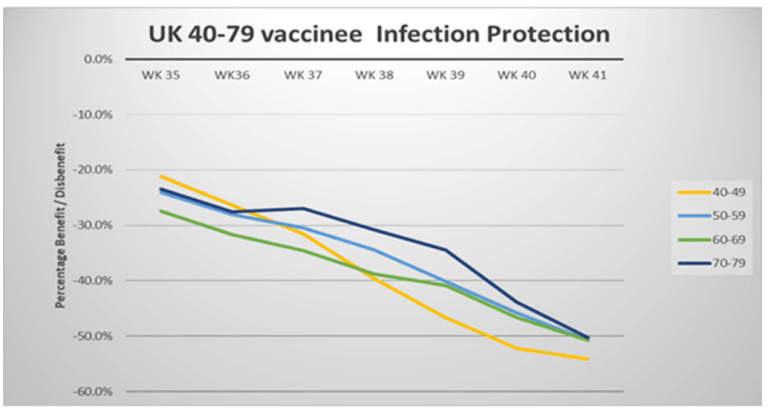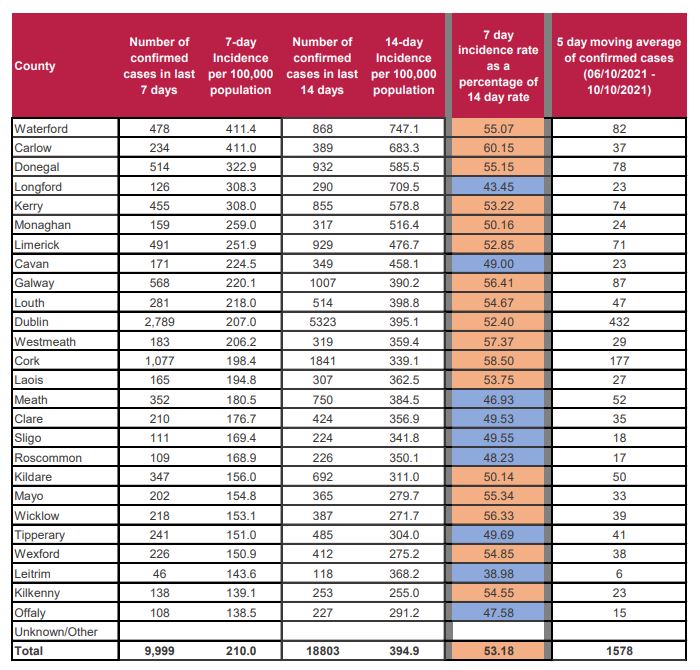IT’S OFFICIAL: Most of the UK’s vaccinated population are suffering far higher rates of infection than the unvaccinated, and it is getting worse by the day.
by Martin Zandstra
THE EXPOSE
The UK’s Health Security Agency publishes detailed Covid statistics, which, for the last 7 weeks, have been tabulated by age group and vaccination status. This now allows important questions to be answered.
The Agency says most vaccinated suffer substantially higher rates of infection, and their latest chart provides a snap-shot:

All of the UK’s 30-and-over vaccinated now endure far higher rates of infection than their unvaccinated counterparts. But as a snap-shot, this tells us nothing of how this arose, or how it may yet develop. Here we re-present the agency’s data in a time series, to promote a better understanding of the trends and implications.
The UK has vaccinated its population mostly in age order, from oldest to youngest, and very recently began vaccinating its under-18-year-old cohort. Being the UK’s most freshly vaccinated, they exhibit a very high degree of resistance to Covid infection:

This very recently vaccinated cohort benefits from a 90% improvement in their infection rates, meaning their case incidence is 10 times better than that of their unvaccinated counterparts. This is impressive, and leads us to ask how long this high degree of protection might last?
The answer, unfortunately, seems to be not very long:

The previous UK age group to be vaccinated was the 18–29-year-old cohort, of which half was fully vaccinated by some 9 weeks ago. While still doing better than the unvaccinated of their age, they have nevertheless lost the greater part of their relative resistance to infection. If they continue their trajectory, week 12 will see that benefit completely gone.
The earlier vaccinated age group was the 30–39 cohort. Half was fully vaccinated around week 27, and by week 39 (again some 12 weeks later) had lost their enhanced infection resistance. For at least for these two cohorts, it would seem their vaccine-induced resistance reduced to zero in under 3 months.
Unfortunately, it does not stop there; Following the data shows the vaccinated descend well into negative territory, which may prompt us to ask how all earlier vaccinated cohorts are now doing?
In terms of vulnerability to infection, the answer is not so well:

The entire 40-79 vaccinated cohort is deeply negative, now below minus 50%, meaning they suffer more than double the infection rate of their unvaccinated counterparts, and there is no obvious end in sight; Given the consistent and strongly negative continuing trend for all adult cohorts, it is impossible to guess where or when these trajectories might bottom out.
But does the trend result from increased vulnerability amongst the vaccinated, or is improved resistance developing amongst the unvaccinated? The answer appears to be both:

Unvaccinated adults are enjoying significantly lowered infection rates, but the vaccinated are very clearly headed in the opposite direction:

This begs the question: Why should the vaccinated suffer mounting infection rates, while case rates of the unvaccinated both declined and are lower? Surely, we should expect the vaccinated to do better – certainly no worse?
Yet, for all but one adult cohort, the exact opposite is true, and even for them, it seems likely for not much longer:

It has been suggested infection amongst the unvaccinated has induced robust natural immunity leading towards their herd immunity. That may well be a factor, but, as we have seen, the vaccinated have similarly been infected, and at least for the 40-79 cohort, at much higher rates. Why should this not benefit the vaccinated as well?
Are we to understand infection after vaccination may not produce similar broad immunity?
Vaccination is intended to alter the subsequent immune response to infection, which is, of course, the whole point; It is conceivable this altered response may mute the development of broad long-lasting immunity that otherwise typically results from natural infection. That might then leave the vaccinated more open to re-infection and might help explain these results. But this remains speculation, we simply do not know today.
What we do know from the UK data, is that anyone vaccinated more than a few months ago is at a greatly higher risk of Covid infection and is therefore greatly more likely to be infected than their unvaccinated counterparts.
Much has been said and written to show the vaccinated are equally capable of transmitting Covid. But because their symptoms are often muted, they are also more likely to be out and about; add this to escalating infection rates, and there can be little doubt the vaccinated now constitute by far the greatest Covid transmission risk.
In light of this, vaccine passports are clearly senseless; They are nothing more than an invitation to infection, for which no justification can now possibly remain.
Related posts:
Views: 0
 RSS Feed
RSS Feed

















 October 27th, 2021
October 27th, 2021  Awake Goy
Awake Goy 




 Posted in
Posted in  Tags:
Tags: 
















